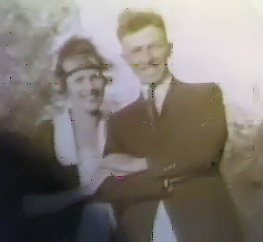The Past is a Foreign Country
Muse Newsletter
Vo. 33 No. 1 – Winter 2023
by Braden Murray
The past is a foreign country. They do things differently there.
This opening line of the L.P. Hartley novel The Go-Between has been rattling around in my head since I first read it some years ago. It is a simple line that’s made a tremendous impact in how I view the past. Even though the people in the past lived in the same places, resembled us physically, and had many of the same impulses we do, they still carried with them their own beliefs, traditions, and values that can seem foreign to us in the present time.
I was reminded of this line by a wedding announcement in the pages of a January 1923 edition of the Kenora Miner and News. In the social section was a report of the marriage of James A. Ryan (namesake of the tugboat) and Eva Perreault. Anyone who reads the paper is familiar with the format— since the 1970s Miner and News legend Ruth Bowiec has been furnishing similar reports. But this piece was peculiar. At first glance, it’s a regular wedding announcement. But looking at the details of the wedding is a fascinating look at the history of abandoned wedding traditions, and a gentle reminder that the past is indeed a “foreign country.”
First things first— the wedding took place on Wednesday, January 24th at 9:30am.

Eva Perrault and James Ryan
What?
Traditionally Wednesday weddings were preferred and Saturday weddings were a no-no. There are conflicting reports as to why, but there is a catchy jingle from English folklore that served as a guideline—
Monday for health,
Tuesday for wealth,
Wednesday the best day of all;
Thursday for losses,
Friday for crosses,
And Saturday no luck at all
Morning weddings were also common and it was understood that a wedding breakfast (more of a light brunch) would be served in a home after the wedding. Such was the case with the Ryan wedding— after the ceremony the wedding party and guests crossed the street from Notre Dame Church to the bride’s parents’ house at 211 First Street North where a “sumptuous wedding breakfast was served.” Receptions as we know them, complete with dancing and cake, were basically unheard of.
Wedding fashion has shifted as well. The bride, Eva Perrault, wore a stylish castor broadcloth suit, with a long coat. The bottom of the coat was hand embroidered with brown trim and the collar was beaver fur. Her blouse was a blue-green canton crepe (wavy fabric) with a tan radium lace (sequinned) overblouse. Her look was complete with a brown satin cloche hat with leather trim and brown braid. No flowing white gown here! Eva was wearing “travelling dress”, which was a smart business-casual look meant for work, travel, and other semi-formal occasions. It was seen as appropriate and practical to get married in travelling dress when the new couple would be leaving immediately for their honeymoon, which was the case for Eva and James.
There is a note specifically mentioning James Ryan’s “Groom’s Gift to the Bride.” Though it’s fallen out of favour, a Groom’s Gift to the Bride was once a major part of the wedding day celebration. It was a delicate process! If the gift was too expensive it was seen as a vulgar and wasteful display. If the gift was too cheap, however, it was seen as just that— cheap. Luckily the groom seems to have nailed it with a traditional gift of a pearl necklace for his bride, and pearl accessories for the wedding party.
The couple left for an eastern honeymoon on the “No. 2” which was the eastbound Atlantic Express train. The No. 2 left Kenora at 12:10 pm and carried the couple east to Pembroke, to meet James’s parents, then to Ottawa (the nation’s capital) and finally to Montreal (Canada’s largest city at the time). The trip to Ottawa would have taken them about 60 hours to complete. A worthy test for a new marriage!
The Ryans remained happily married for the rest of their lives. Their January 1923 wedding announcement, though familiar at first glance, is a reminder that in many ways the past is a foreign country. They do things differently there.

Did you know?
The Lake of the Woods is a remnant of glacial Lake Agassiz and contains 14 542 islands. The underlying Precambrian bedrock is one of the oldest geological formations on earth.
